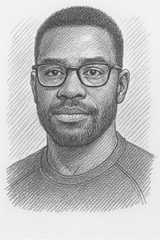Massage and Reflexology: Unlock Holistic Wellness
Discover the therapeutic benefits of massage and reflexology for natural healing, stress relief, and improved well-being. Experience deep relaxation and revitalization

https://www.youtube.com/watch?v=ILJw0cP_2LE
Did you know that up to 70% of people find relief from pain through reflexology? This natural healing method is changing the game in wellness centers across the U.S. It offers a holistic way to improve health and recovery.
Massage and reflexology are deep therapeutic methods that go beyond regular medicine. They work on many body systems, helping with physical and emotional issues. For example, posture correction techniques combined with reflexology can lead to amazing healing.
Reflexology uses specific pressure points on the body to start healing. It connects reflex points to organs, helping the body balance itself. This technique boosts the body's natural healing powers.
Key Takeaways
- Reflexology targets multiple body areas for comprehensive healing
- Proven to reduce stress and alleviate chronic pain
- Enhances circulation and supports natural body functions
- Safe therapeutic approach with minimal side effects
- Supports both physical and emotional wellness
Understanding the Power of Therapeutic Touch
Therapeutic massage is a deep healing art that connects us through touch. It shows how professional massage therapy links our physical and emotional health.
Origins and Historical Significance
Reflexology has ancient roots in China and Egypt. These places show us early healing traditions before modern medicine.
- Chinese practitioners started touch-based healing systems
- Egyptian medical papyri showed early massage techniques
- Dr. William H. Fitzgerald introduced reflexology in the U.S. in 1913
Scientific Principles Behind Healing Touch
Massage therapy works by tapping into our nervous system. When we press certain points, it relaxes us. This reduces stress and boosts our body's functions.
| Physiological Response | Potential Benefits |
|---|---|
| Oxytocin Release | Stress Reduction |
| Endorphin Stimulation | Natural Pain Management |
| Nervous System Activation | Enhanced Circulation |
Modern Applications in Wellness
Wellness centers now use therapeutic massage as a holistic health tool. Relaxation techniques have grown, helping with both physical and emotional health.
Studies show touch can greatly improve our mental and physical health. It can lower anxiety, boost our immune system, and improve our life quality.
Massage and Reflexology: Comprehensive Benefits for Body and Mind
Deep tissue massage and pain relief treatments are amazing for both body and mind. Studies show they have a big impact on health. They do more than just relax you.
Massage therapies have many physical benefits backed by science. They help with:
- Muscle tension reduction
- Enhanced immune system function
- Improved circulation
- Better sleep quality
Mental health improvements are also key. Deep tissue massage can greatly help your mood by:
- Reducing stress levels
- Promoting emotional balance
- Enhancing cognitive clarity
- Alleviating symptoms of anxiety
| Therapy Type | Physical Benefits | Mental Benefits |
|---|---|---|
| Deep Tissue Massage | Chronic pain relief | Stress reduction |
| Reflexology | Improved circulation | Emotional balance |
Studies back up these benefits. A 2018 study in the Journal of Special Operations Medicine found that 311 patients believed reflexology reduced pain by 94%. Men saw a 43% pain drop, and women a 41% decrease.
Massage offers a non-invasive way to treat pain. It targets muscles and nerves for a holistic healing effect. This supports both physical and mental health.
Professional Therapeutic Techniques and Applications
Professional massage therapy uses many healing techniques to help with health issues. These methods target specific body parts and improve overall health.
Deep Tissue and Swedish Massage Methods
Deep tissue and Swedish massage are key in professional massage therapy. Deep tissue massage works on deep muscle layers to release tension. Specialized training programs teach therapists these complex skills.
- Deep tissue massage targets chronic muscle tension
- Swedish massage promotes relaxation and stress reduction
- Both techniques require extensive professional training
Foot Reflexology Mapping and Pressure Points
Foot reflexology is a detailed method in professional massage therapy. It uses precise pressure on foot zones that link to body organs and systems.
| Foot Area | Corresponding Body System |
|---|---|
| Ball of Foot | Chest and Heart |
| Arch | Digestive Organs |
| Heel | Pelvic Area and Intestines |
Integration of Holistic Healing Approaches
Modern professional massage therapy now uses holistic healing. It combines foot reflexology with other methods for a full wellness experience. This approach helps both physical and mental health.
- Combines multiple healing modalities
- Addresses mind-body wellness
- Provides personalized therapeutic experiences
Conclusion
Massage therapy and reflexology are key to holistic healing in today's wellness centers. They do more than just ease pain; they help restore the body and mind. By focusing on specific points and lowering stress, they help the body heal itself.
Studies show that massage and reflexology are effective in tackling health issues. They can ease muscle pain and improve sleep. These methods are great for anyone looking to improve their health.
Wellness centers now see the big impact of these therapies. They understand how touch, stress, and body responses are linked. This knowledge helps them create treatments that meet each person's needs.
As healthcare keeps changing, massage and reflexology will become even more important. They offer a gentle yet effective way to support health. Choosing these therapies is a smart step towards staying healthy and feeling good.
FAQ
What is the difference between massage and reflexology?
Massage focuses on muscles and soft tissues to ease tension and relax. Reflexology uses pressure on feet, hands, or ears to target body systems and organs. Both aim to heal and improve wellness, but in different ways.
How can massage therapy help with chronic pain?
Massage, like deep tissue, can help chronic pain by easing muscle tension and improving blood flow. It targets deep muscle issues, reducing pain and enhancing mobility. This helps the body heal naturally.
Is foot reflexology scientifically proven?
Studies suggest foot reflexology may offer benefits. It's based on reflex points on the feet linking to body systems. Practitioners report stress reduction, pain management, and wellness improvements through specific pressure points.
How often should I get a professional massage?
Massage frequency varies based on health, stress, and physical state. For wellness, monthly massages are common. Those with chronic pain might need more frequent sessions, every 1-2 weeks, as advised by a therapist.
Can massage and reflexology help with stress and mental health?
Yes, they are great for mental well-being. They lower stress hormones, relax, and improve mood. These techniques can significantly help with anxiety, depression, and emotional balance.
Are there any risks associated with massage and reflexology?
Generally safe, but always consult a professional. Some might feel sore, and certain health conditions require medical clearance. Choose a licensed, experienced practitioner from a reputable center.
What should I expect during my first massage or reflexology session?
Your first session starts with a health consultation. The therapist will explain the technique and ensure comfort. You'll be draped or covered, with only the worked area exposed. Communicate about pressure and comfort for a great experience.
How do professional massage techniques differ from at-home methods?
Professional therapists are trained in anatomy, physiology, and specific techniques. They know precise pressure points and therapeutic approaches. At-home methods may offer temporary relief, but professionals provide more targeted and informed healing.
👉 Join the Active Man Community
Get expert tips, workout guides, nutrition hacks, and the latest trends delivered straight to your inbox every week. No spam — just actionable insights to help you live stronger, healthier, and better.





